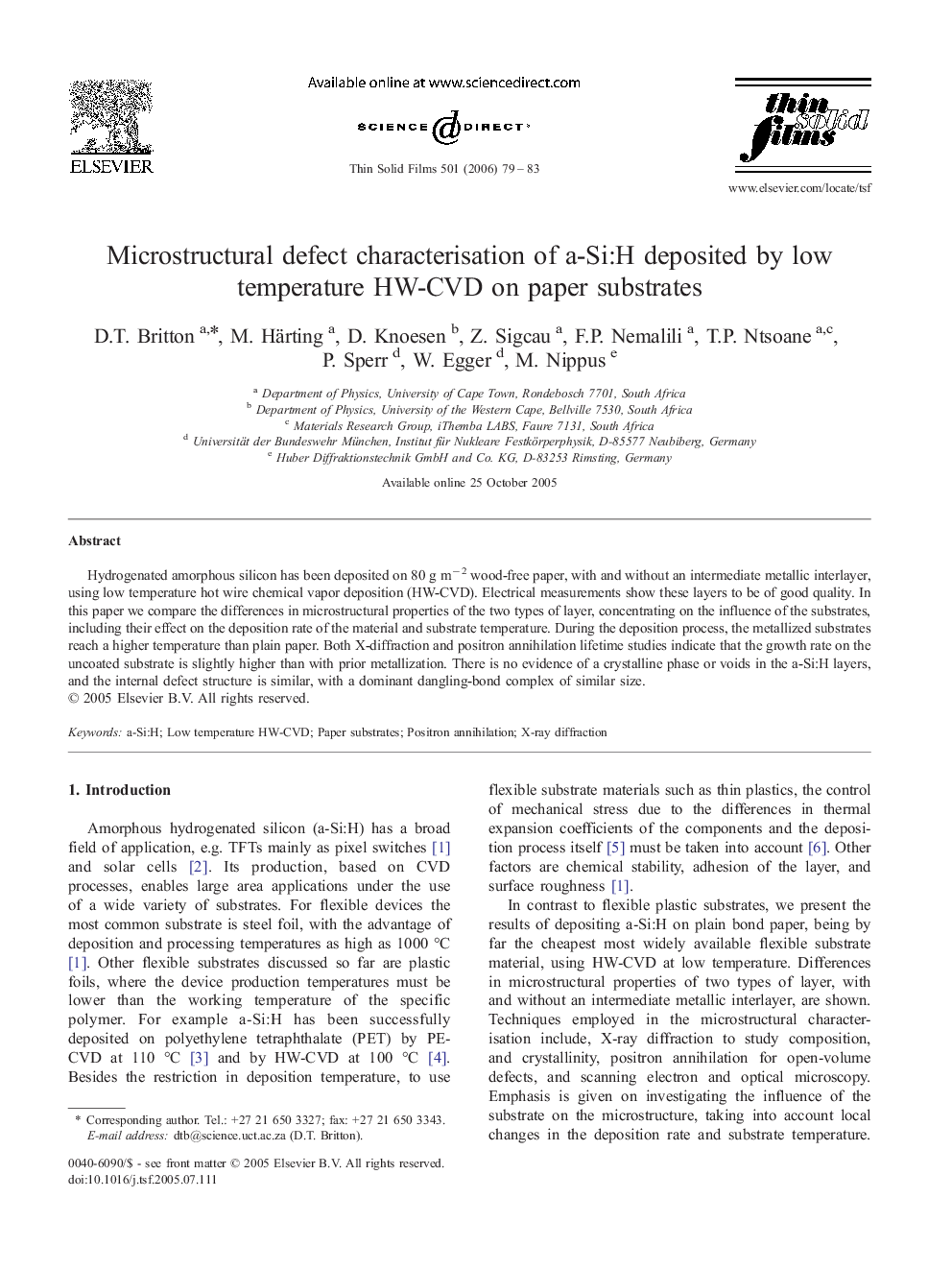| Article ID | Journal | Published Year | Pages | File Type |
|---|---|---|---|---|
| 1676164 | Thin Solid Films | 2006 | 5 Pages |
Abstract
Hydrogenated amorphous silicon has been deposited on 80 g mâ 2 wood-free paper, with and without an intermediate metallic interlayer, using low temperature hot wire chemical vapor deposition (HW-CVD). Electrical measurements show these layers to be of good quality. In this paper we compare the differences in microstructural properties of the two types of layer, concentrating on the influence of the substrates, including their effect on the deposition rate of the material and substrate temperature. During the deposition process, the metallized substrates reach a higher temperature than plain paper. Both X-diffraction and positron annihilation lifetime studies indicate that the growth rate on the uncoated substrate is slightly higher than with prior metallization. There is no evidence of a crystalline phase or voids in the a-Si:H layers, and the internal defect structure is similar, with a dominant dangling-bond complex of similar size.
Related Topics
Physical Sciences and Engineering
Materials Science
Nanotechnology
Authors
D.T. Britton, M. Härting, D. Knoesen, Z. Sigcau, F.P. Nemalili, T.P. Ntsoane, P. Sperr, W. Egger, M. Nippus,
